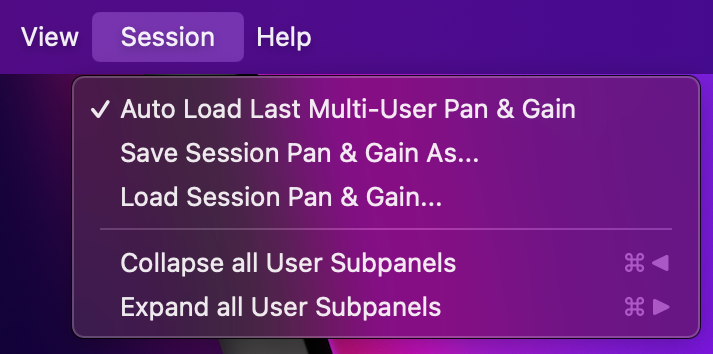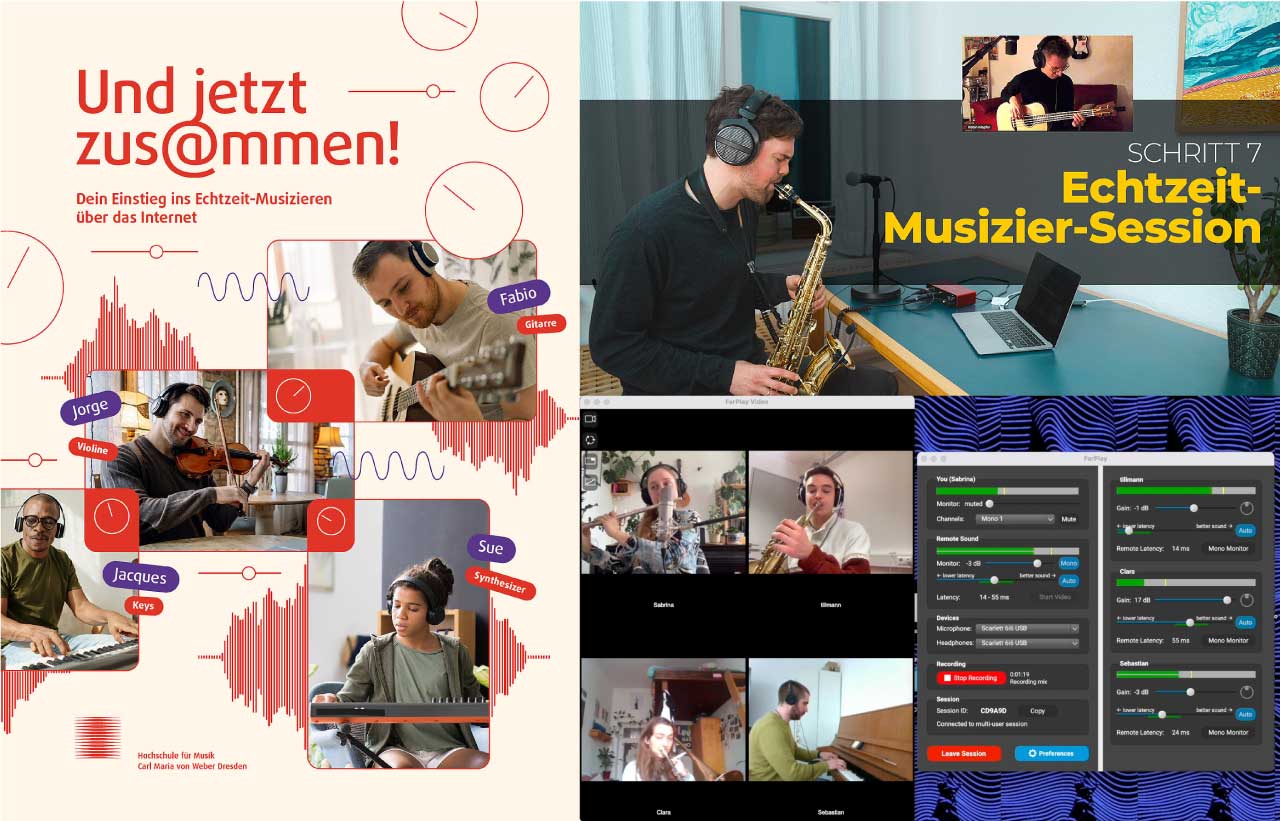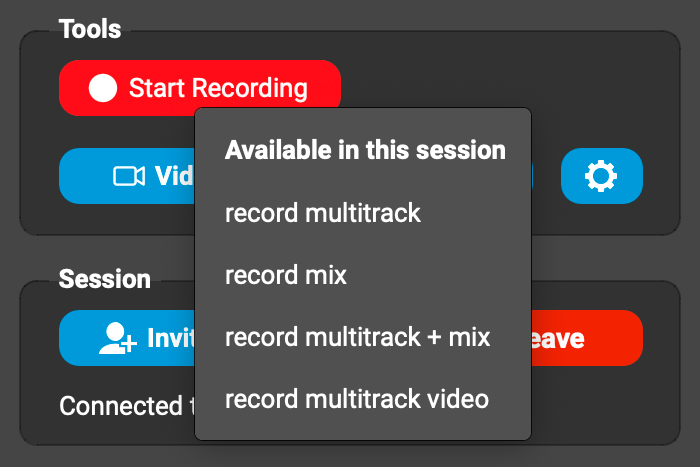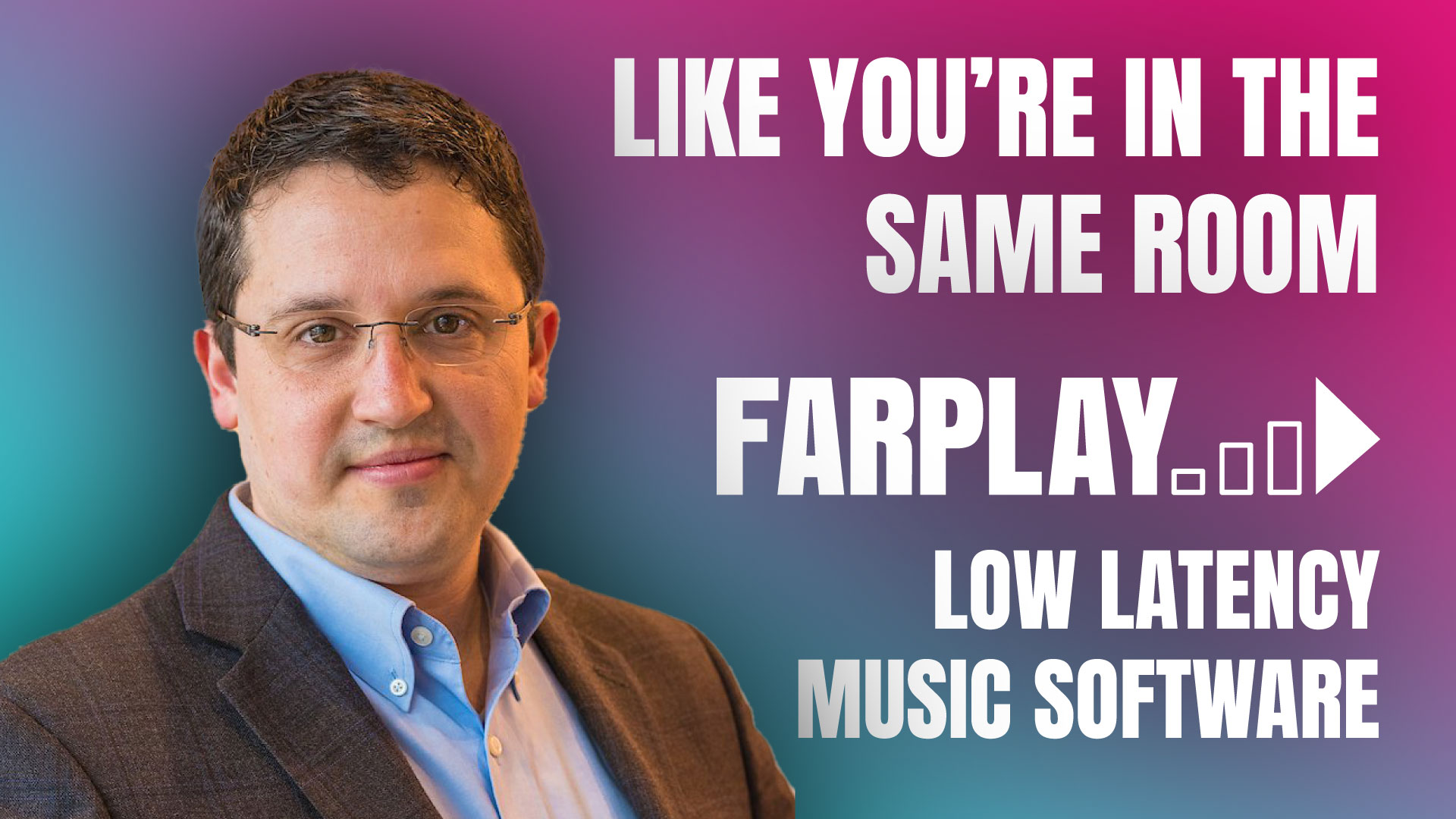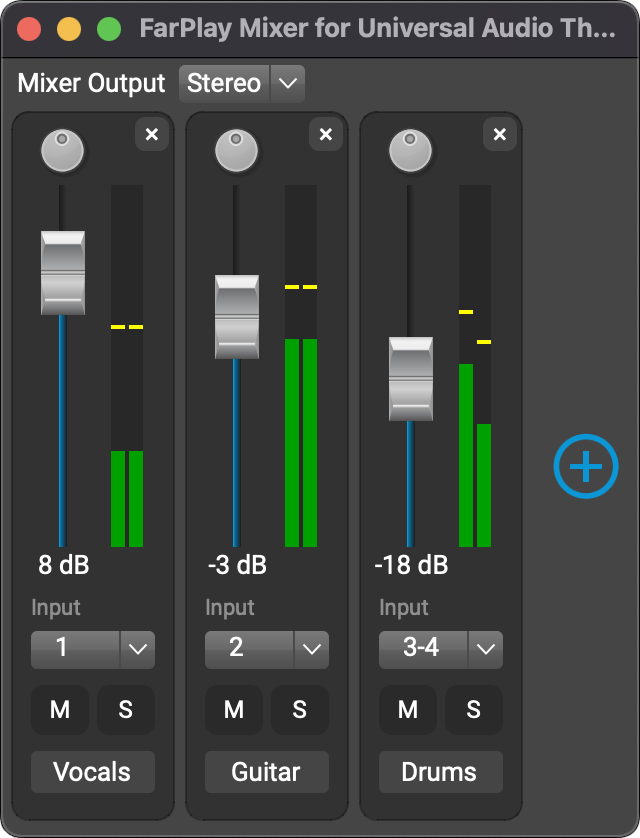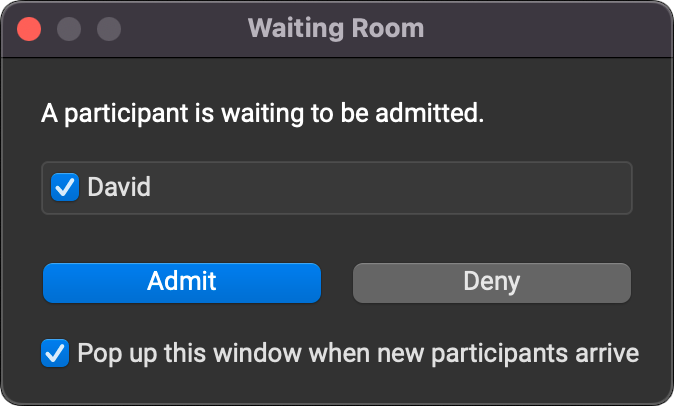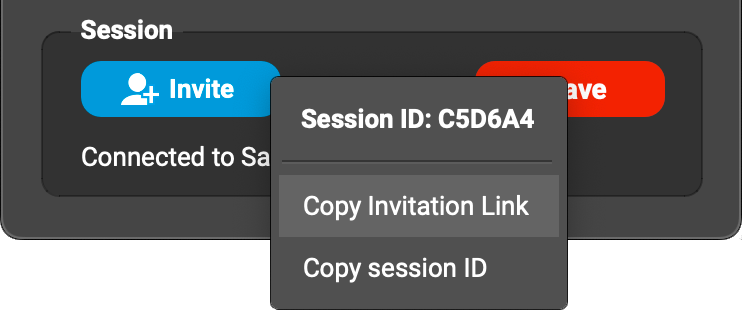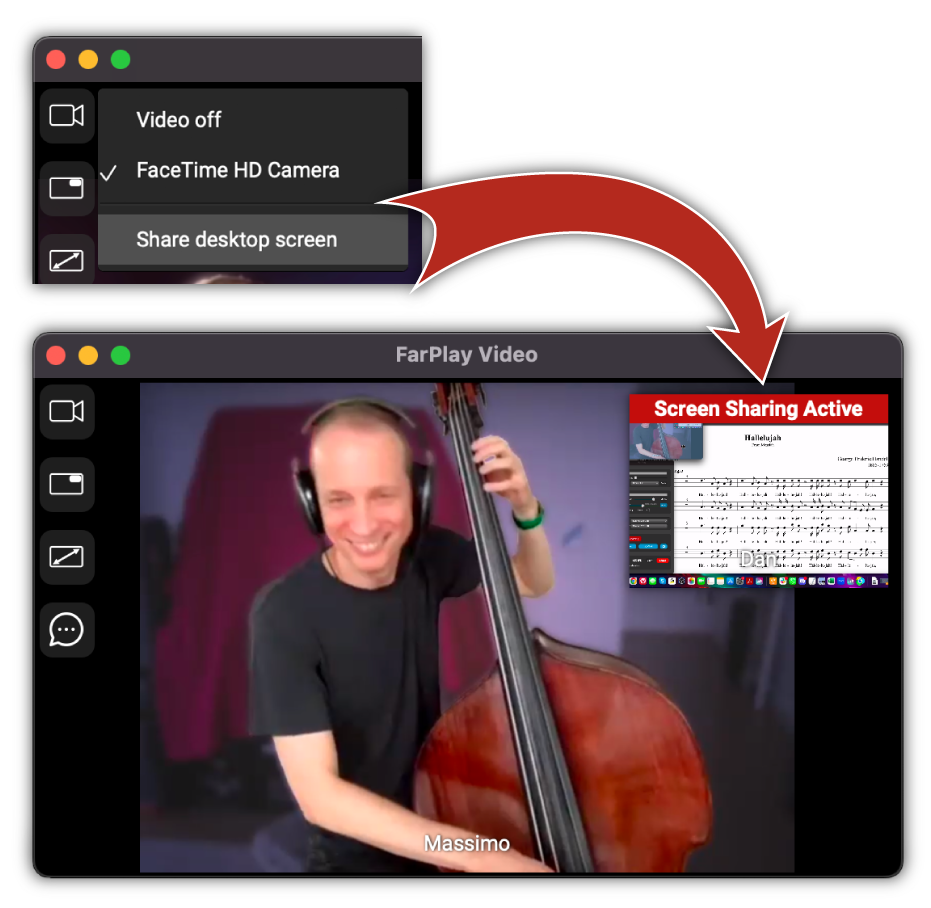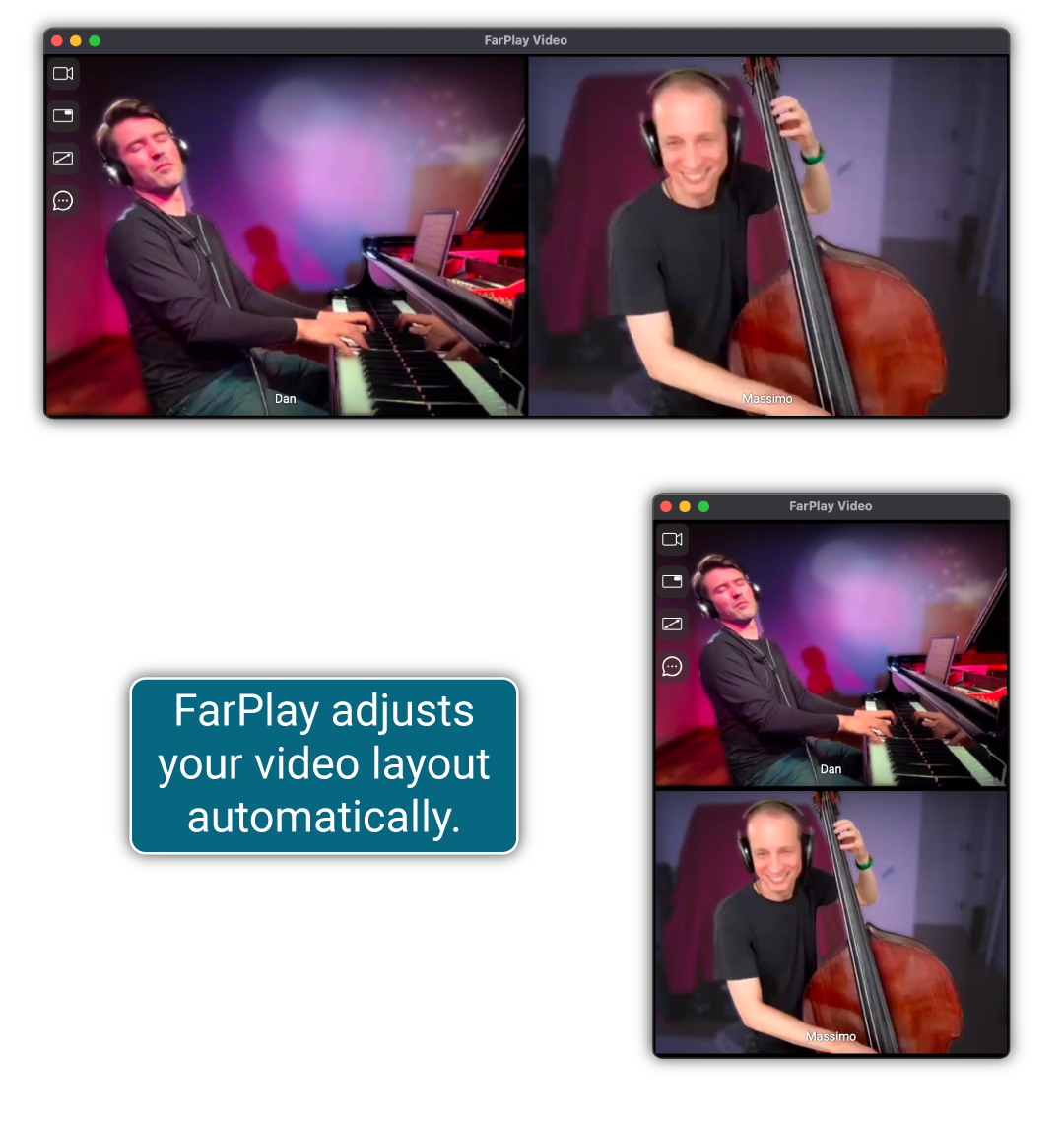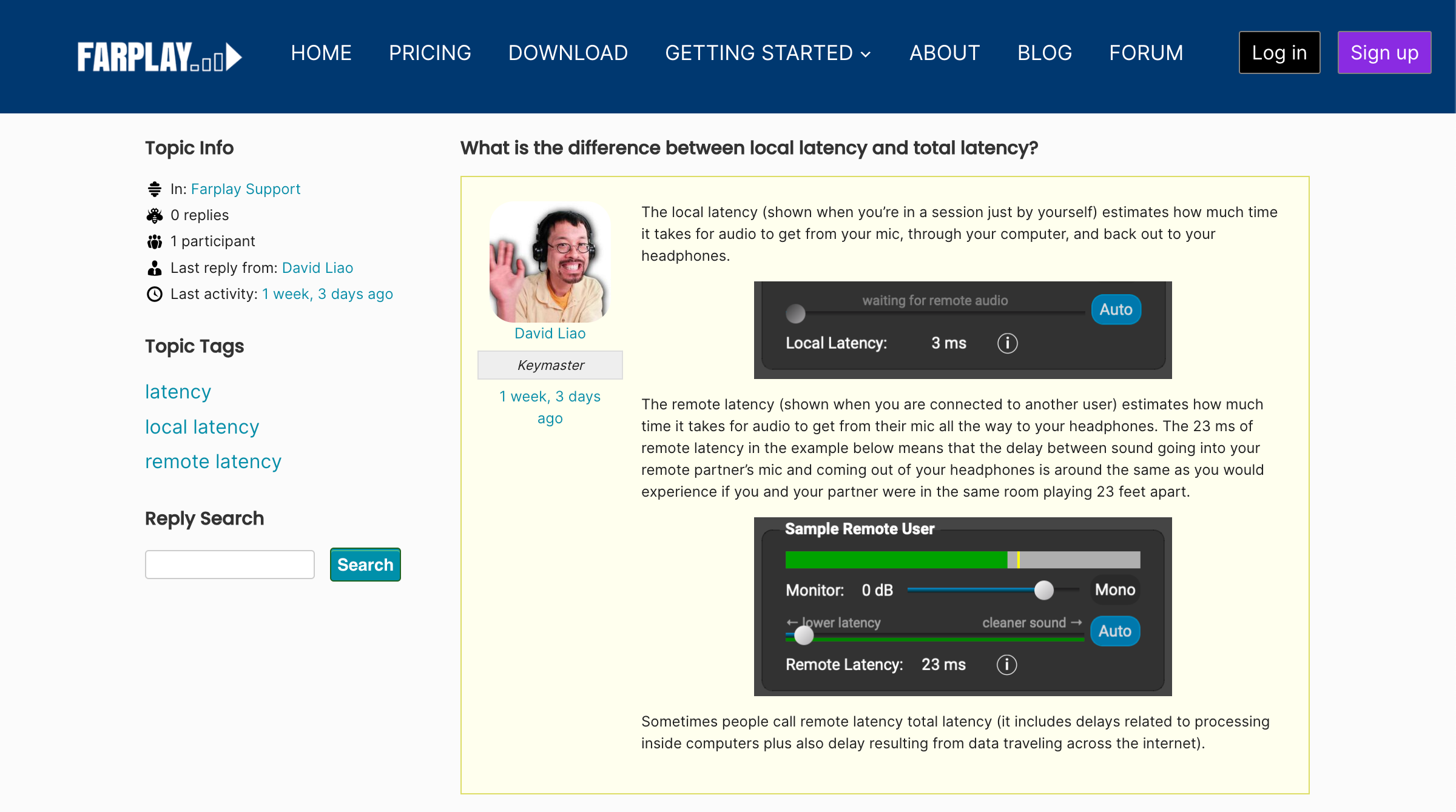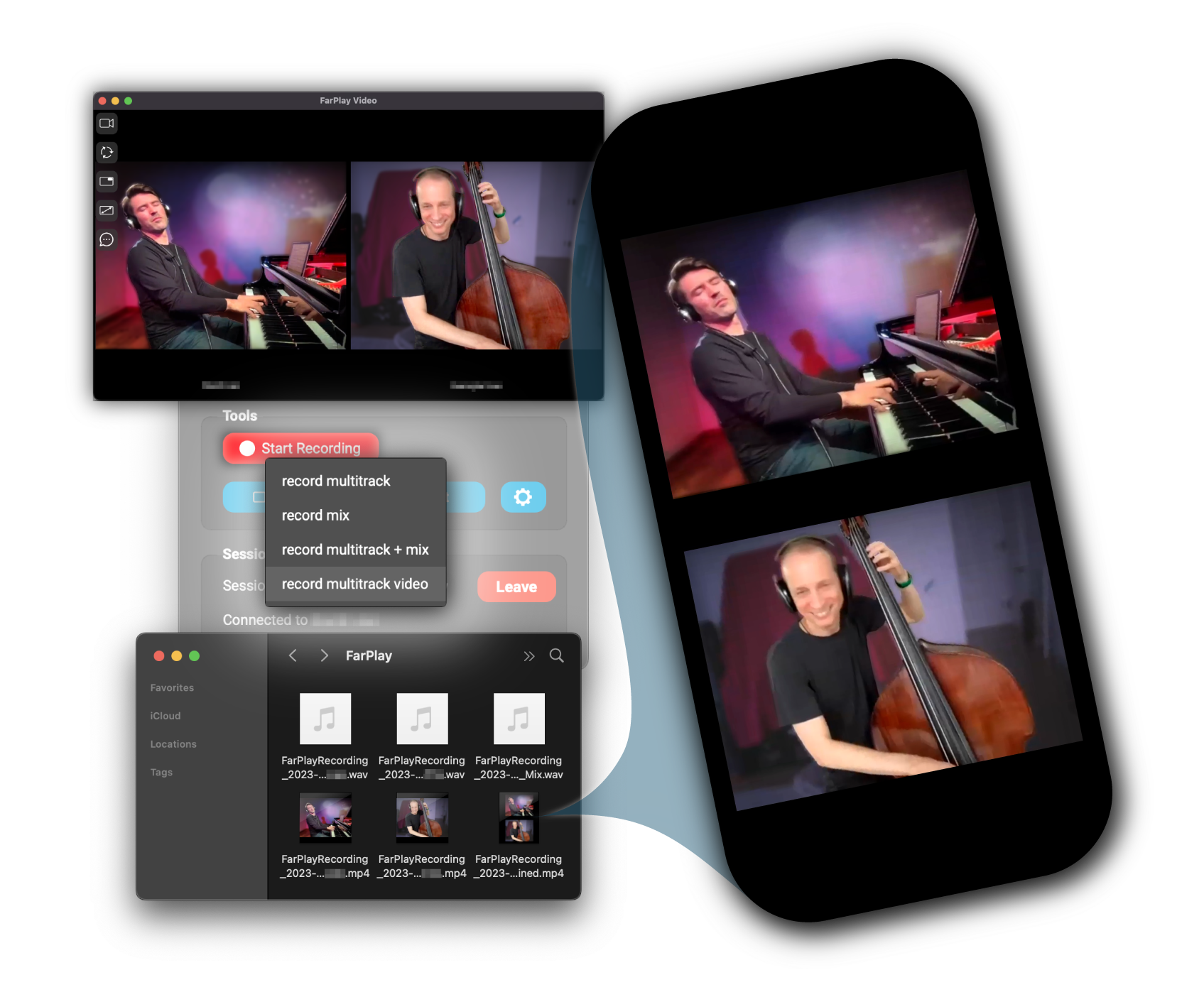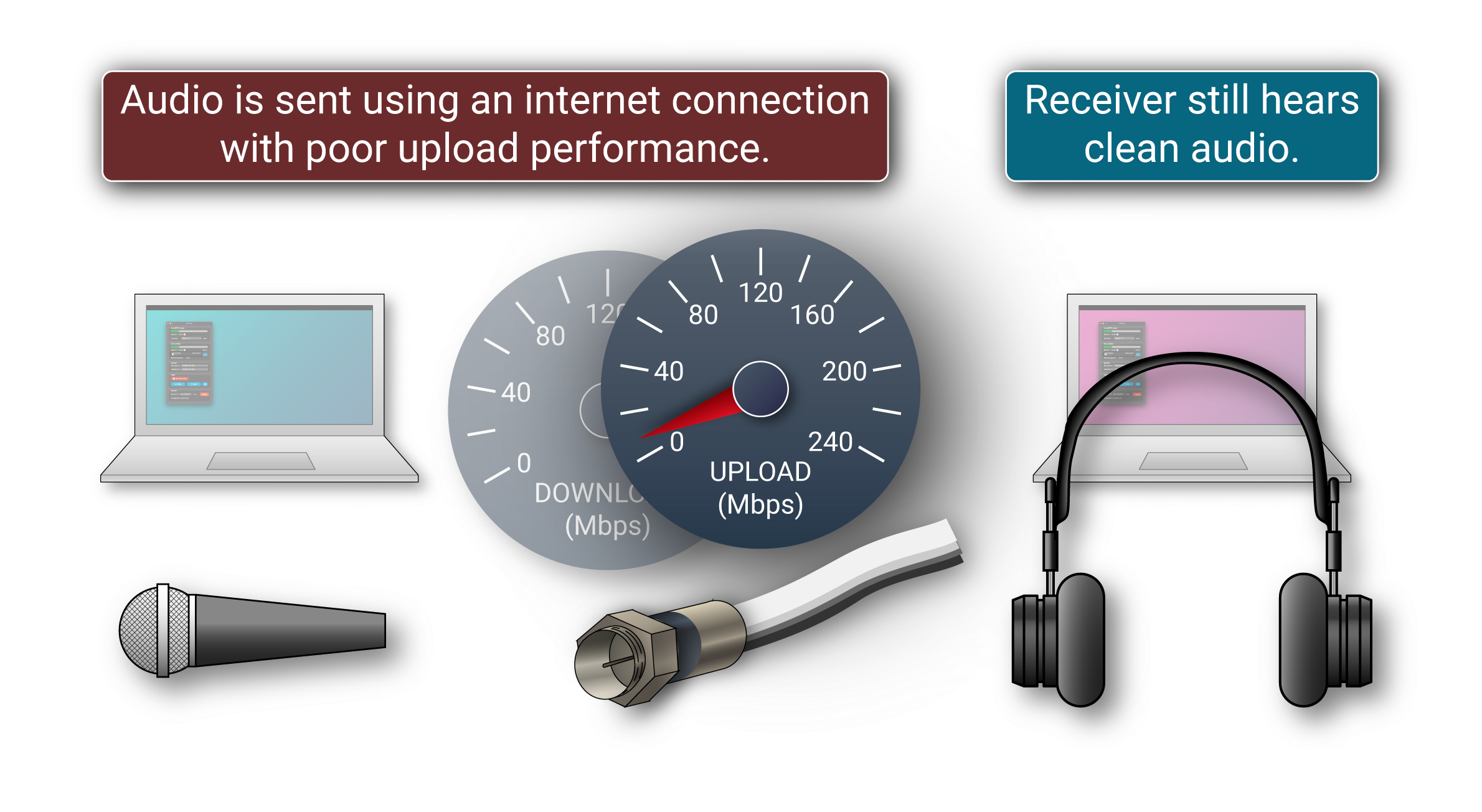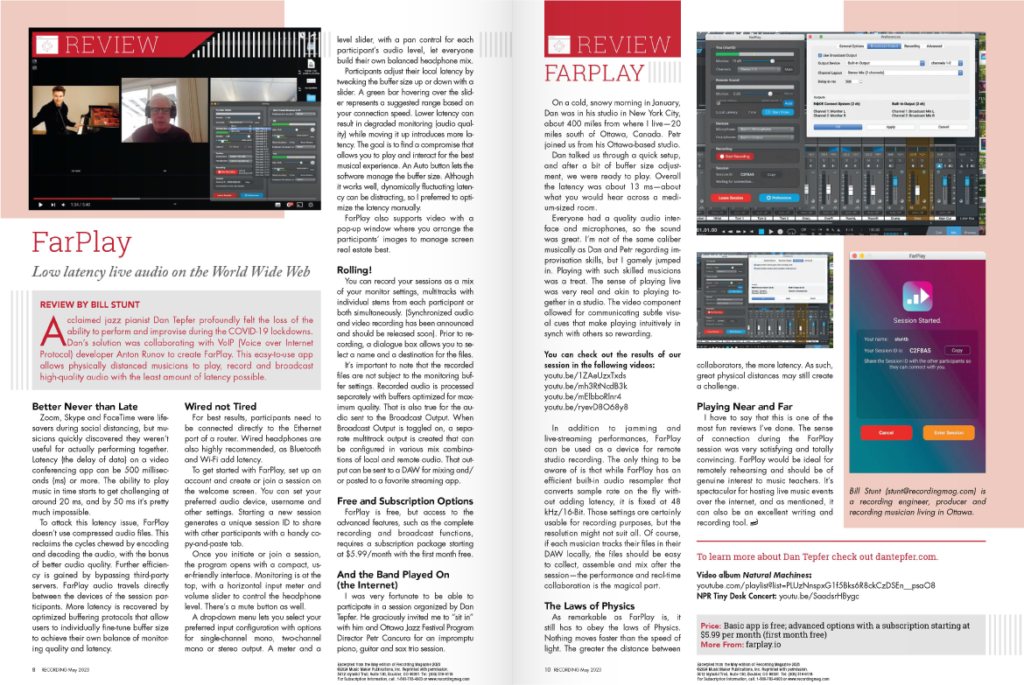
We’re proud to be featured in Recording Magazine, which has published monthly audio-technology news and reviews to help musicians “make the best recordings possible” since 1987. Writer Bill Stunt, a veteran radio production manager living near Ottawa, Canada, tested FarPlay out in real-world circumstances by playing a session with saxophonist Petr Cancura in Ottawa and pianist Dan Tepfer in Brooklyn, New York, 400 miles away. He gave FarPlay a rave review, remarking that “the sense of playing live was very real and akin to playing together in a studio,” and that “FarPlay would be ideal for remotely rehearsing and should be of genuine interest to music teachers.”
Read the full review here, or in the text below. To read the full May 2023 issue, head over to Recording Magazine.

FarPlay:
Low latency live audio on the World Wide Web
REVIEW BY BILL STUNT
Acclaimed jazz pianist Dan Tepfer profoundly felt the loss of the ability to perform and improvise during the COVID-19 lockdowns. Dan’s solution was collaborating with VoIP (Voice over Internet Protocol) developer Anton Runov to create FarPlay. This easy-to-use app allows physically distanced musicians to play, record and broadcast high-quality audio with the least amount of latency possible.
Better Never than Late
Zoom, Skype and FaceTime were life-savers during social distancing, but musicians quickly discovered they weren’t useful for actually performing together. Latency (the delay of data) on a video conferencing app can be 500 milliseconds (ms) or more. The ability to play music in time starts to get challenging at around 20 ms, and by 50 ms it’s pretty much impossible. To attack this latency issue, FarPlay doesn’t use compressed audio files. This reclaims the cycles chewed by encoding and decoding the audio, with the bonus of better audio quality. Further efficiency is gained by bypassing third-party servers. FarPlay audio travels directly between the devices of the session participants. More latency is recovered by optimized buffering protocols that allow users to individually fine-tune buffer size to achieve their own balance of monitoring quality and latency.
Wired not Tired
For best results, participants need to be connected directly to the Ethernet port of a router. Wired headphones are also highly recommended, as Bluetooth and Wi-Fi add latency. To get started with FarPlay, set up an account and create or join a session on the welcome screen. You can set your preferred audio device, username and other settings. Starting a new session generates a unique session ID to share with other participants with a handy copy-and-paste tab. Once you initiate or join a session, the program opens with a compact, user-friendly interface. Monitoring is at the top, with a horizontal input meter and volume slider to control the headphone level. There’s a mute button as well. A drop-down menu lets you select your preferred input configuration with options for single-channel mono, two-channel mono or stereo output. A meter and a level slider, with a pan control for each participant’s audio level, let everyone build their own balanced headphone mix. Participants adjust their local latency by tweaking the buffer size up or down with a slider. A green bar hovering over the slider represents a suggested range based on your connection speed. Lower latency can result in degraded monitoring (audio quality) while moving it up introduces more latency. The goal is to find a compromise that allows you to play and interact for the best musical experience. An Auto button lets the software manage the buffer size. Although it works well, dynamically fluctuating latency can be distracting, so I preferred to optimize the latency manually. FarPlay also supports video with a pop-up window where you arrange the participants’ images to manage screen real estate best.
Rolling!
You can record your sessions as a mix of your monitor settings, multitracks with individual stems from each participant or both simultaneously. (Synchronized audio and video recording has been announced and should be released soon). Prior to recording, a dialogue box allows you to select a name and a destination for the files. It’s important to note that the recorded files are not subject to the monitoring buffer settings. Recorded audio is processed separately with buffers optimized for maximum quality. That is also true for the audio sent to the Broadcast Output. When Broadcast Output is toggled on, a separate multitrack output is created that can be configured in various mix combinations of local and remote audio. That output can be sent to a DAW for mixing and/or posted to a favorite streaming app.
Free and Subscription Options
FarPlay is free, but access to the advanced features, such as the complete recording and broadcast functions, requires a subscription package starting at $5.99/month with the first month free.
And the Band Played On (the Internet)
I was very fortunate to be able to participate in a session organized by Dan Tepfer. He graciously invited me to “sit in” with him and Ottawa Jazz Festival Program Director Petr Cancura for an impromptu piano, guitar and sax trio session. On a cold, snowy morning in January, Dan was in his studio in New York City, about 400 miles from where I live—20 miles south of Ottawa, Canada. Petr joined us from his Ottawa-based studio. Dan talked us through a quick setup, and after a bit of buffer size adjustment, we were ready to play. Overall the latency was about 13 ms—about what you would hear across a medium-sized room. Everyone had a quality audio interface and microphones, so the sound was great. I’m not of the same caliber musically as Dan and Petr regarding improvisation skills, but I gamely jumped in. Playing with such skilled musicians was a treat. The sense of playing live was very real and akin to playing together in a studio. The video component allowed for communicating subtle visual cues that make playing intuitively in synch with others so rewarding.
You can check out the results of our session in the following videos: youtu.be/1ZAeUzxTxds
youtu.be/mh3RtNcdB3k
youtu.be/mElbboRlnr4
youtu.be/ryevD8O68y8
In addition to jamming and live-streaming performances, FarPlay can be used as a device for remote studio recording. The only thing to be aware of is that while FarPlay has an efficient built-in audio resampler that converts sample rate on the fly without adding latency, it is fixed at 48 kHz/16-Bit. Those settings are certainly usable for recording purposes, but the resolution might not suit all. Of course, if each musician tracks their files in their DAW locally, the files should be easy to collect, assemble and mix after the session—the performance and real-time collaboration is the magical part.
The Laws of Physics
As remarkable as FarPlay is, it still has to obey the laws of Physics. Nothing moves faster than the speed of light. The greater the distance between collaborators, the more latency. As such, great physical distances may still create a challenge.
Playing Near and Far
I have to say that this is one of the most fun reviews I’ve done. The sense of connection during the FarPlay session was very satisfying and totally convincing. FarPlay would be ideal for remotely rehearsing and should be of genuine interest to music teachers. It’s spectacular for hosting live music events over the internet, and as mentioned, it can also be an excellent writing and recording tool.

